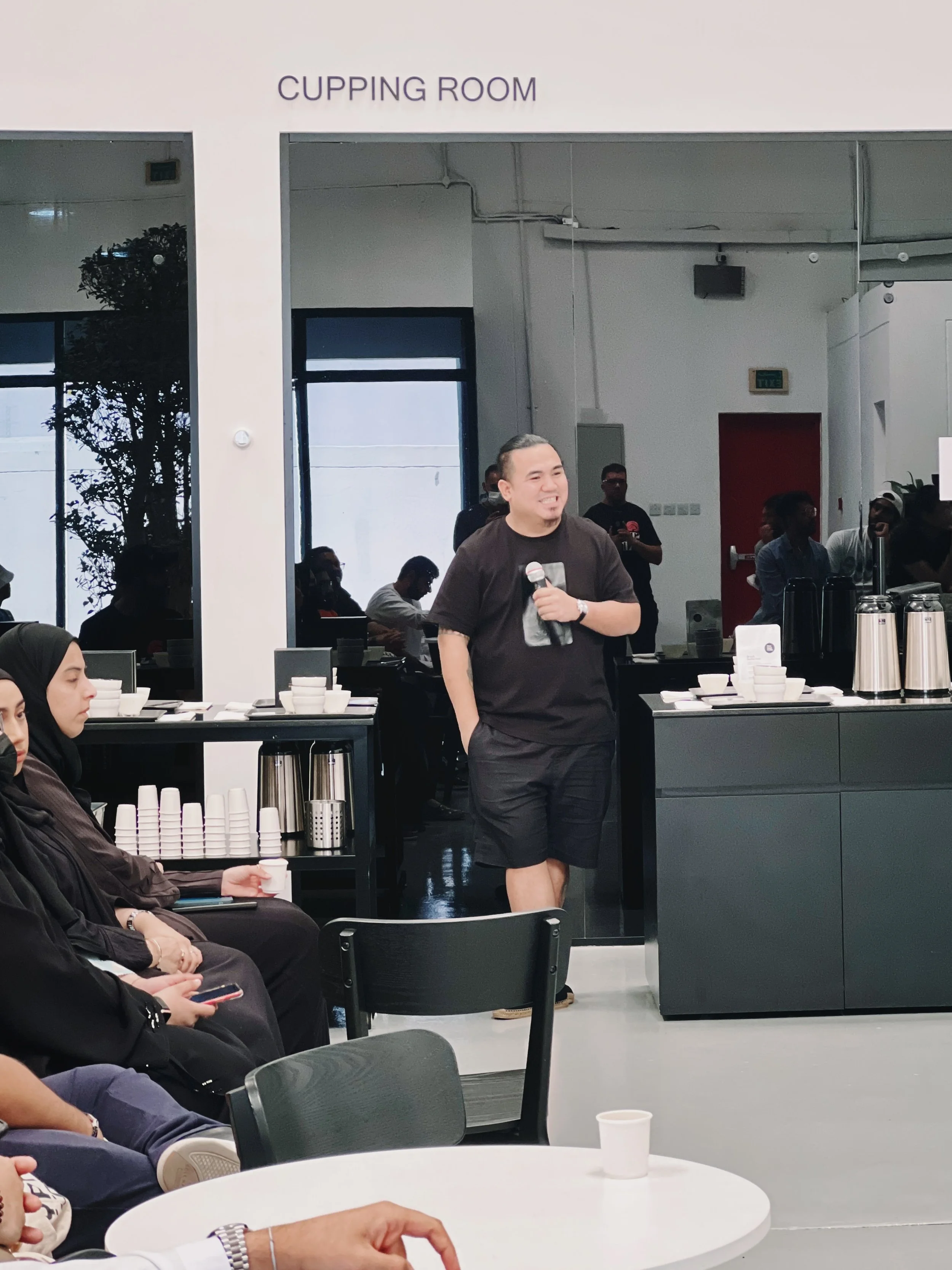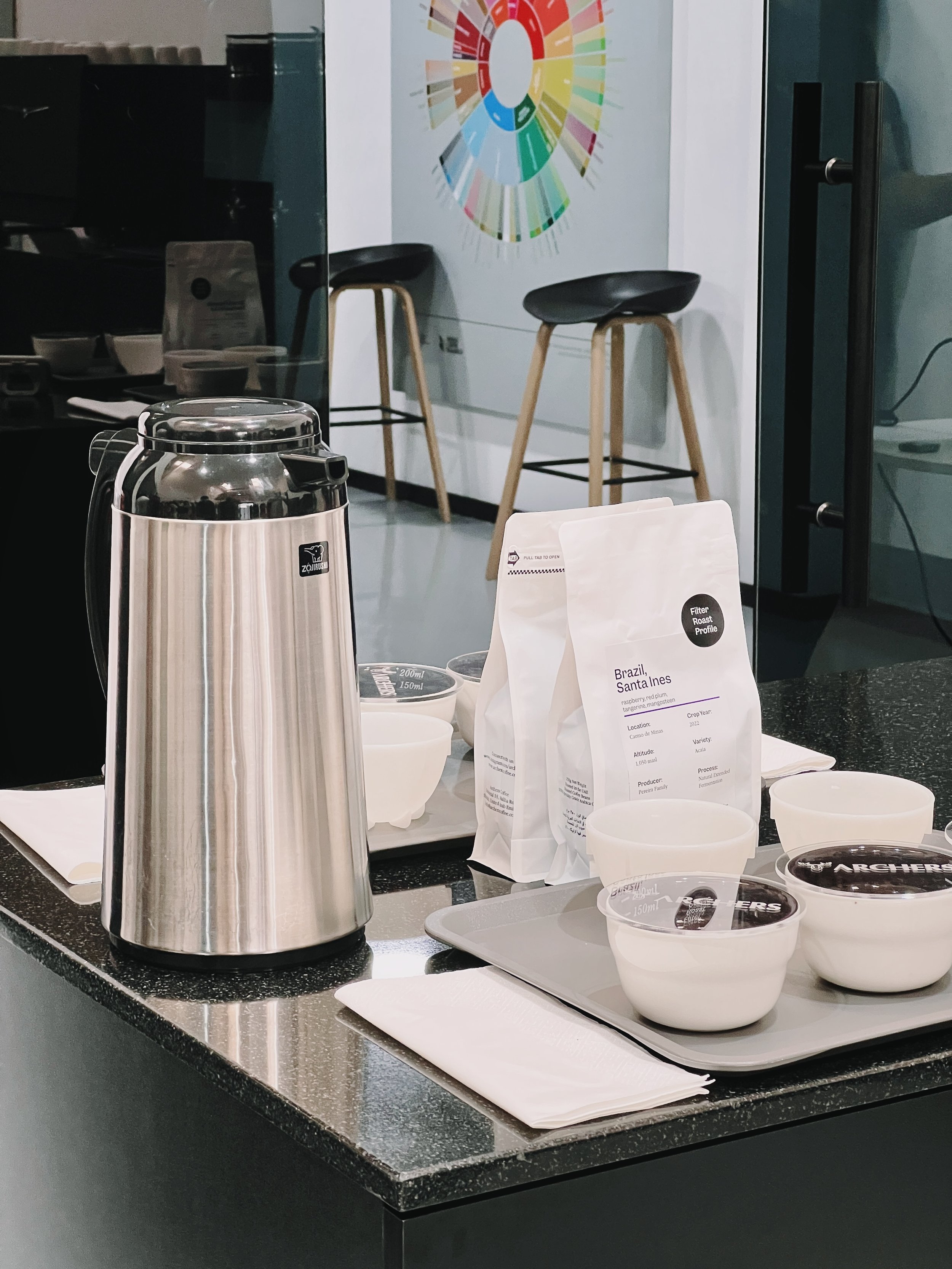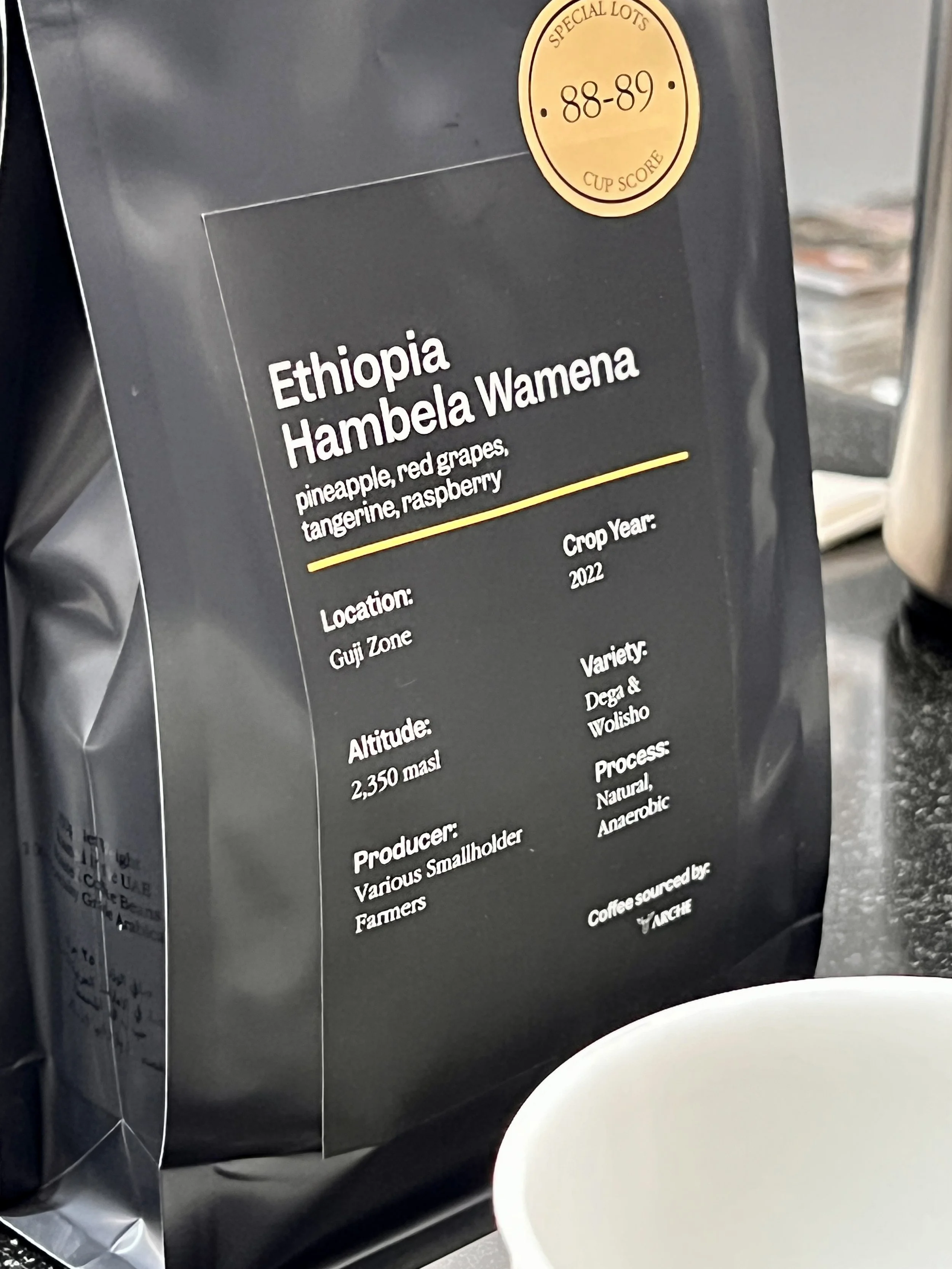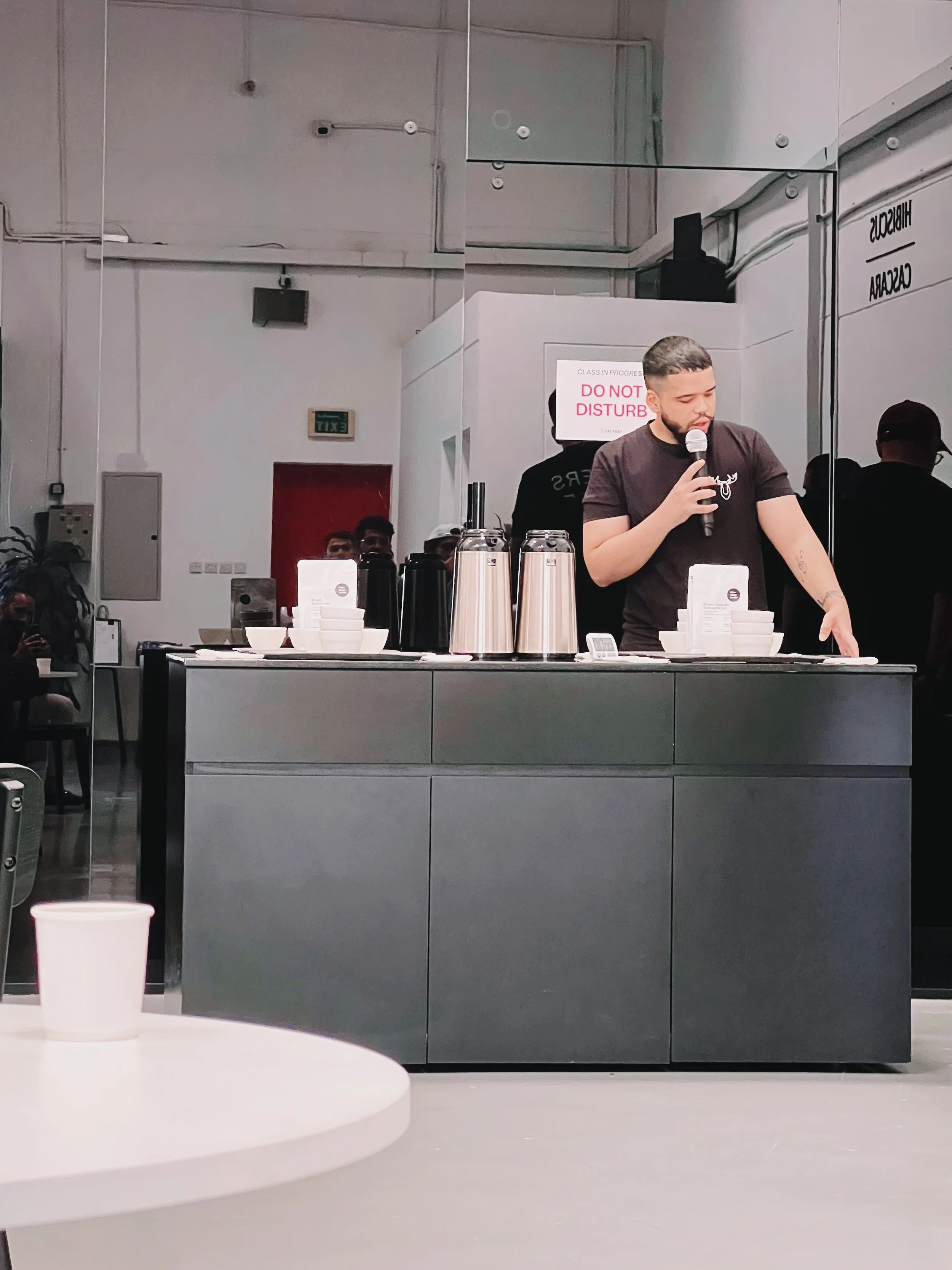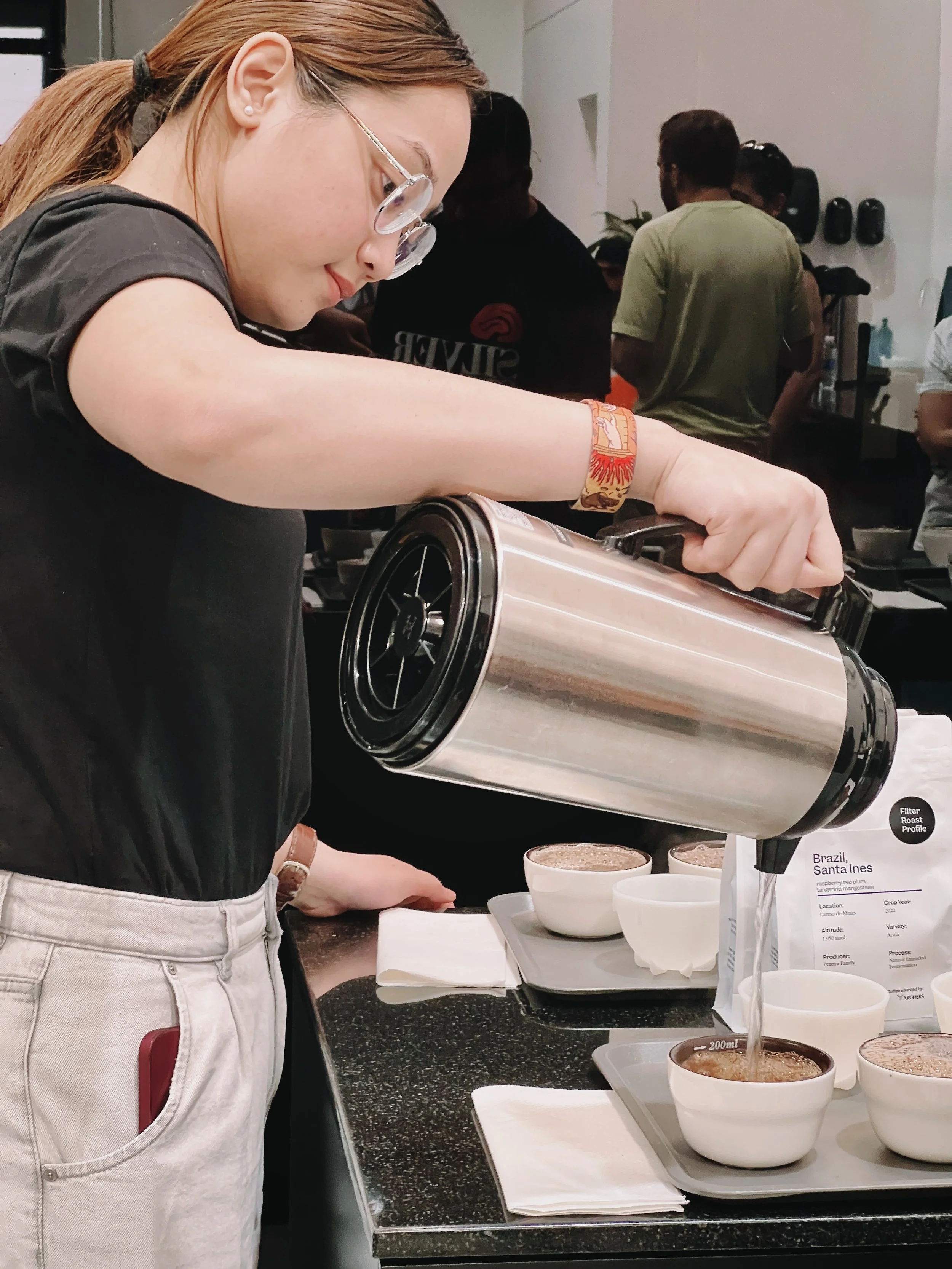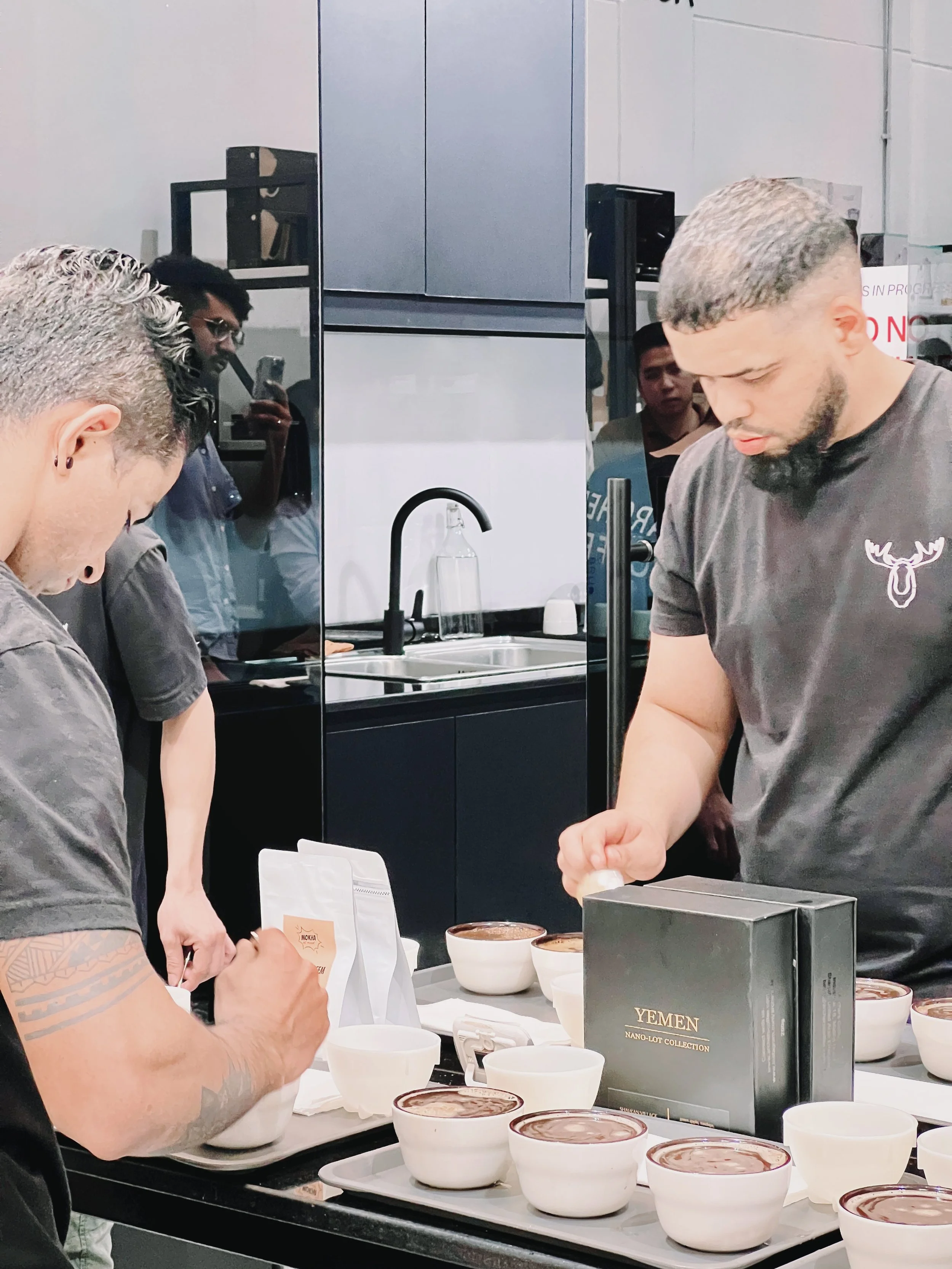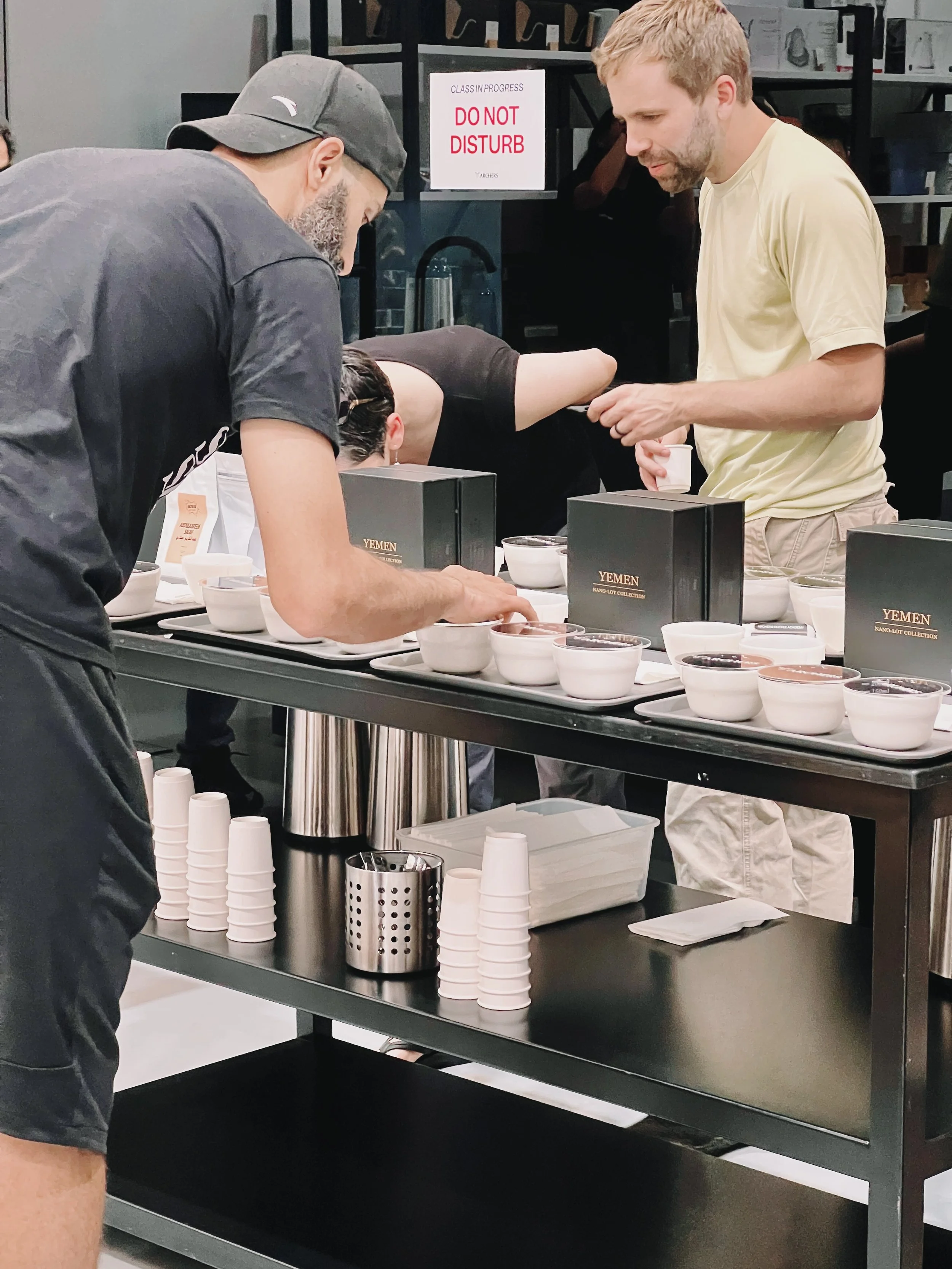It’s the season of coffee cupping
I think we can take a breather from all the coffee competitions that took place the last few months. In the interim, coffee cupping events have surfaced. It’s great watching our favorite baristas compete, but cupping takes the cake when it involves tasting delicious coffee. I have already attended two this month. Last week’s event was held at Grandmother Coffee Roastery featuring Cofinet, and the most recent one was at Archers featuring three producer partners who I will introduce in a moment.
There are hundreds of volatile and non-volatile compounds in coffee that determines the flavor and quality. The volatiles are what we are interested in and only a handful can be perceived. The quality of coffee can be scored based on factors such as sweetness, acidity, mouthfeel, aftertaste etc. This is how coffee is tasted by producers, buyers, roasters and baristas around the world.
I was bummed out that I couldn’t attend the last cupping event at Archers called Producers Talk. I knew I had to make time for this month’s tasting to get a preview on what Archers have to offer. I arrived late to the event expecting the cupping to have already begun, but to my surprise, Frederick Bejo had taken the stage to talk about the increasing prices of coffee.
Without a doubt, the price of coffee has increased by two-fold this year. Fred showed from what I could decipher was the US Coffee C Futures historical data. What are futures, you ask? They are predefined contracts that enable buyers and sellers to work out an agreed price of coffee at set points in the future.
When you look at Brazil for example, this origin produces more than 30% of the world’s coffee. When there’s a problem in Brazil, the impact around the world is felt. Climate change is no longer a jargon that can be ignored. Brazil produced a lot less coffee this year due to drought and frost conditions last year.
Why are the prices going up? It’s simple economics, really. Demand and supply. Coffee consumption has been increasing steadily year-to-year, and when there’s less coffee that cannot meet the demand, prices go up. The global coffee consumption this year is predicted to reach 168.8 million 60kg bags, up from 164.8 million last year, according to Rabobank International.
The COVID effects are still being felt across the world and as the lockdowns have started to ease up, we have another tragedy which is the war in Ukraine. Both these factors have pretty much increased freight costs and disrupted the supply chain.
Even the cafe owners have no idea why the prices have increased. Roasteries cannot increase the prices all at once and I’ll tell you why. If you compare with the oil and gas industry, changes in price is reflected almost instantaneously amongst different stakeholders across countries, and we are seeing this take place right now with the energy crisis.
A price increase in commercial coffee will also be implemented more or less at once across the board. But in the specialty world, this increase will not be applied and certainly not carried over to their clientele. What Fred is trying to do here is talk about key issues in the coffee industry and build awareness with consumers.
Even Wilden chimed in and spoke about coffee pricing in Ethiopia. 55% of the coffee produced by Ethiopia is consumed locally, according to a report by USDA Foreign Agricultural Service. In an article by Sucafina Specialty, Emanuel Woldemariam, QC & Supply Chain Coordinator for Sucafina Ethiopia, informed that roasters should prepare for high coffee prices this year.
With the implementation of new rules in foreign currency, liquidity issues and rising internal consumption means coffee is more lucrative to sell internally rather than exporting out of the country. Let’s not forget the ongoing civil war raging in Ethiopia disrupting people and services, changing weather patterns and unpredictable rains, fueling the price increase.
And like that, the enlightening educational session was over and it was time to taste some coffee. Brazilian coffee is synonymous with espressos and milk based coffee but did you know that this origin also has really good filter coffee to offer. I was pleasantly surprised by the coffee CarmoCoffees put forward from the region of Carmo de Minas. The washed Sudan Rume from Fazenda Santurario Sul was straight to the point — crisp and juicy.
Yemen was next and the producer Mokha not mocha! shines, in my humble opinion. It’s not the name that made an impression but their values of using truth and knowledge in the highest regard to create a lasting impact. I’ll be straight here, one coffee tasted like I was in Bateel biting into a succulent caramel coated date. The one next to it had prominent Honey notes.
Next table was Kebir Coffee of Ethiopia and there was one coffee that stood out, it was the Hambela Wamena. This natural anaerobic delicacy had prominent notes of pineapple, berries and orange.
I can forecast more cupping sessions taking place at roasteries showcasing new releases. This way I know exactly what coffee I am going to buy without second guessing whether I’ll actually enjoy it at the end of the day. Let me be the first to tell you that next month they are going to cup coffee from Panama. I’d be following Archers on Instagram if I were you.

